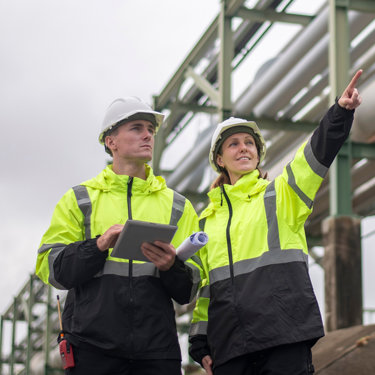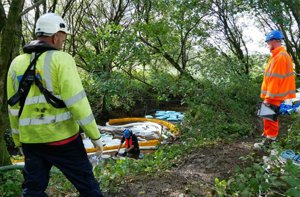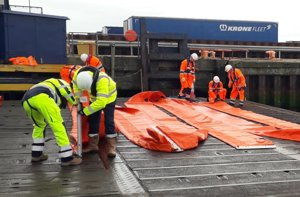
Chemical hazards
Ready to discuss your project?
Please leave your details and a member of our team will reach out to discuss your requirements in more detail and arrange next steps.
We offer a nationwide emergency chemical response service, acting fast in the event of a hazardous material spill or leak to keep you, your employees, and your local community safe.
In-house chemists and fire service trained first responders are equipped to deal with incidents ranging from a chemical bund uplift to a widespread industrial accident, including handling hazardous waste such as sulphuric acid and mercury.
Our crews work alongside the emergency services in the hotzone to assess the risks and minimise environmental damage and fines incurred.
Features and outputs
- 24/7 response to a spill of any hazardous material solid, liquid, or gas.
- In-house incident commanders in line with fire and rescue services.
- Seven In-house Hazardous Materials Advisers (HMA) and 50 Hazardous Materials First Responders (HMFR) in line with fire and rescue protocol.
- In-house DGSA capability to support with transport and waste requirements.
- Chemically engineered solutions to whatever the incident.
Added value
A chemical spill is defined as the uncontrolled release of a hazardous chemical, either as a solid, liquid or gas. This includes substances ranging from acids and solvents to heavy metals, pesticides and poisonous or flammable gases. Many can be extremely volatile, especially if mixed.
Our in-house chemists and scientists take control from the start via technical chemical engineering team. They identify the chemicals involved, check the safety data sheets, so they understand their properties and behaviour. This knowledge, along with geological maps and topographical surveys, allow them to analyse and predict the spread of the spill and better understand how to remediate the area.
PPE and equipment
We hold stocks of all required PPE for a chemical response including full body chemical suits, face shields, eye protection, gloves, hard-hats, high visibility vests, protective boots, powered air purifying respirators [PAPR] augmented with B.A. sets should the team be required to enter a confined space where escaped ‘gases’ could be concentrated.
Each depot has a response unit van with decontamination and eye-washing facilities, stainless steel hose, inert pumps on trailer, and containment apparatus.
What the legislation says
Under environmental law ‘the polluter pays’, which means whoever caused the chemical pollution is responsible for its prompt and proper clean-up. The same applies to any risk of damage, so you must also do all you reasonably can to prevent incidents happening in the first place.
You might also be interested in...
Environmental compliance today, creating a sustainable tomorrow
Helping you reduce risk to the environment and your operation by managing assets compliantly while achieving commercial, ESG, and net-zero goals.
Contact our experts



